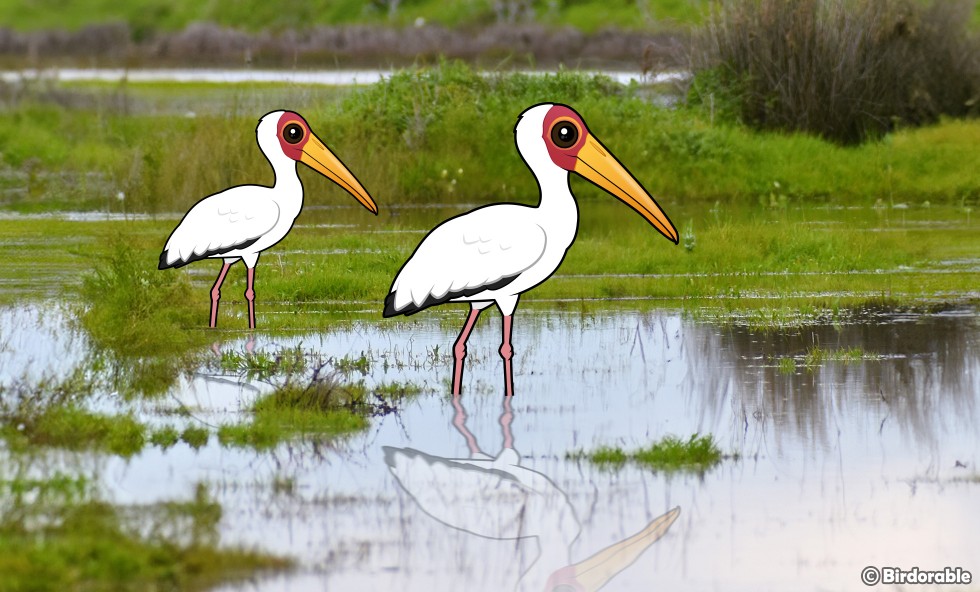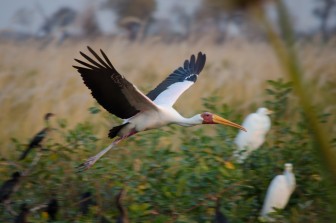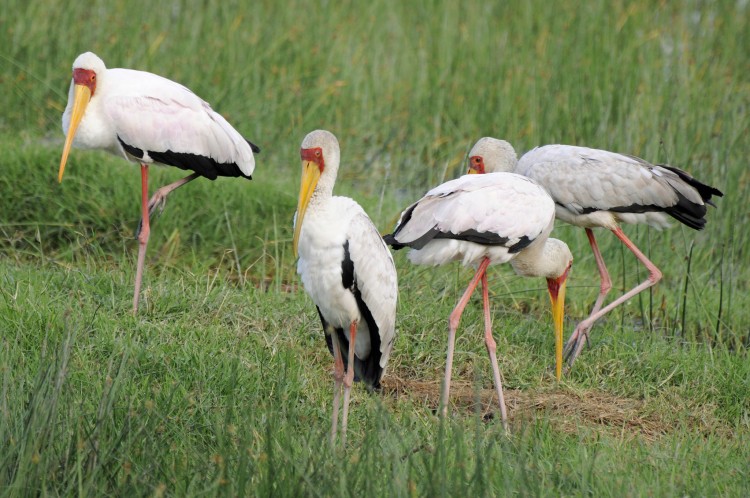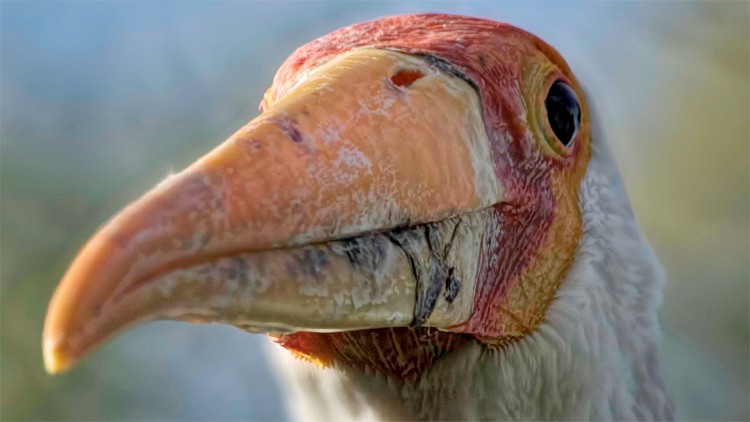Species Profile
Fascinating Facts About Africa's Yellow-billed Stork

The Yellow-billed Stork is a striking and unique bird native to parts of Africa. It belongs to the stork family and is instantly recognizable thanks to its long, bright yellow bill and contrasting pink, black, and white plumage. These large wading birds can be found around freshwater habitats, where they hunt for food and often gather in large flocks. Here are some amazing facts about this fascinating species:
They’re skilled hunters. The Yellow-billed Stork has an interesting way of catching food. Instead of visually searching for prey like many birds, it hunts by touch. The stork wades through shallow water with its long bill partially open, feeling for frogs, small fish, insects, and other aquatic prey items. When something brushes against its bill, it snaps shut in a lightning-fast reaction. This feeding method is called tactile foraging and it allows them to feed in murky waters where visibility is low.
They nest in large, noisy colonies. Yellow-billed Storks are highly social birds, especially during the breeding season. They nest in large colonies, often alongside other species like herons and egrets and other waterbirds. These nesting colonies can become very noisy as hundreds of birds call out to their mates, jostle for space, and protect their nests. They build their nests in trees, typically close to wetlands. A pair will work together to construct a platform-like nest out of sticks, lining it with softer materials such as leaves and grass. Both parents share responsibilities when it comes to raising their chicks. They take turns incubating the eggs and later feeding the hungry hatchlings. Both males and females feed their young by regurgitating partially digested food directly into the chicks’ mouths.
Their babies are hatched all white. The chicks of the Yellow-billed Stork are born looking completely different from their parents. Instead of the adults' vibrant colors, the babies are covered in a fluffy white down. As they grow older, their plumage slowly changes from pale grey to a shade of brown, with the bright whites, blacks, and pinks emerging as they mature into adults. Their iconic yellow bill and reddish face also develop as they age.

Yellow-billed Stork by Benjamin Hollis [CC BY 2.0]
Their wings have a hidden plumage secret. While most of the Yellow-billed Stork's body is a crisp white, their wings reveal a surprise when fully spread. The bird's primary feathers are jet black, creating a striking contrast. Sometimes, especially during the breeding season, their wings and underparts take on a subtle pink hue, giving them an even more eye-catching appearance. This coloring is most vivid when the bird is flying, as it shows off its impressive wingspan of up to 165 cm (nearly 5 and a half feet!).
They're part of wetland ecosystems. Yellow-billed Storks play an important role in the health of wetland ecosystems. As predators, they help control the populations of fish, amphibians, and insects. By wading through shallow waters in search of food, they also help stir up sediments and nutrients, benefiting other animals and plants. Like many wading birds, their presence can indicate the overall health of a wetland area.

Yellow-billed Storks by Son of Groucho [CC BY 2.0]
They are found across sub-Saharan Africa. The Yellow-billed Stork has a wide range across sub-Saharan Africa. They can be found in countries like Kenya, Tanzania, Uganda, and South Africa. They prefer wetlands, floodplains, lakes, and rivers, but are also known to visit man-made environments like fish farms and rice paddies in search of food. Despite their wide distribution, their populations are affected by habitat destruction and water pollution in some areas.
The Yellow-billed Stork is a Birdorable bird! The species joined our cute cartoon bird family on November 23, 2020. You can find gifts featuring the Yellow-billed Stork here.
The Yellow-billed Stork is a beautiful and vital part of Africa’s wetland ecosystems. From their efficient hunting techniques to their impressive nesting colonies, they’re full of fascinating behaviors that make them an incredible species to observe in the wild.

Yellow-billed Stork by Aardwolf6886 [CC BY-ND 2.0]













Comments
Leave a comment
Thank you!